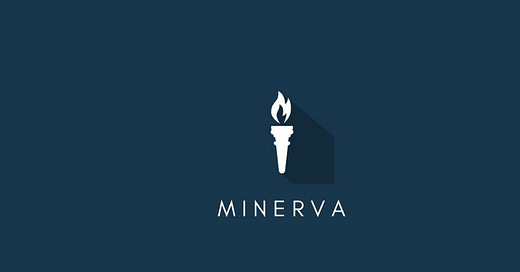What is Minerva?
Minerva is a DAO platform that brings appreciating wine investments to investors on the blockchain. The DAO selects and verifies wine providers who are then authorized to publish Andromeda Digital Objects (ADOs) as proof-of-sale.
WTF are ADOs? ADOs are interoperable modular smart contracts where developers can customize their ADOs by selecting modules that they need via a no-code interface. An NFT 2.0, if you will.
Investors on Minerva’s platform can then use their ADOs as collateral and earn yield on the wine. ADOs are burned after proof of delivery should investors choose to collect their wine assets and any yield generated will be retained by investors. Delivery costs would be borne by users from their first year of yield.
It’s important to note that once redeemed, the art behind the asset won’t be burned but kept by the user as a new kind of NFT (without the rights to redeem obviously). This is just one of the many flexibilities that ADOs afford developers compared to a conventional NFT which is lost once burned.
Logistics
What makes Minerva different from other projects linking blockchain tech with real-world wine assets? These projects mainly utilize a centralized, platform-owned storage facility.
Minerva on the other hand allows merchants to retain custody of their own assets, thereby improving scalability and reach by removing the risk of a single point of failure of a centralized facility. This means that each merchant is responsible for delivery of the wine assets to end-users.
But how does Minerva plan to mitigate wine import/export restrictions? By incentivizing and promoting local (in-country/continent) delivery, Minerva aims to make the entire process as smooth as possible. Users who live in countries that do not accept international wine import will not be able to make these purchases and this guidance will be provided from the start.
Yield
Since wine takes time to mature, Minerva takes 90% (10% goes to a reserve vault) of the $UST that's paid and deploys them into the vault which utilizes multiple yield strategies.
These may include (and are not limited to) Anchor Protocol, Apollo DAO, Nexus Protocol, and Sandclock. The yield is then split between the merchant (70%), user (20%), and insurance/charity (10%).
$TORCH
$TORCH tokenomics take inspiration from Olympus DAO's $OHM. All $TORCH distribution is a function of sales occurring on the platform. This means that every newly minted ADO sale triggers the distribution of $TORCH to stakers & liquidity providers.
As such, any introduction of $TORCH into circulation is inherently backed by $UST. Redemptions can occur when $TORCH trades below its backed value, thus creating a support floor for the token.
Protocol-Managed Liquidity
You've heard of protocol-owned liquidity (POL), but have you heard of protocol-managed liquidity? Initially, the protocol adjusts rewards going to staking/LP, which then prompts users to move their $TORCH accordingly to optimize earnings.
Once platform sales increases and a balance between stakers and liquidity providers is achieved, an algorithmic approach can be used to modify the LP share of revenue based on the data collected.
This allows the protocol to manage its liquidity efficiently, making adjustments to LP share of rewards to combat volatility in trading volume.
Further down the line $TORCH holders could be able to input preferences in terms of min/max allocation towards staking/LP. What does this mean? Holders essentially surrender control and management to the protocol so they do not have to manually shift their $TORCH between staking or LP.
This move would further improve efficiency and optimizes profitability for $TORCH holders.
Conclusion
Minerva plans to bridge real-world wine assets with blockchain technology, supercharging the inherent value appreciation of wine with DeFi yields, benefitting both merchants and investors.
Minerva takes inspiration from OlympusDAO, but instead of being just another bonding protocol they are adapting it to their use-case in order to optimize yield.
POL has yet to be tested by a black swan event. Moving forward it will be interesting to see how Minerva and other protocols build on protocol-owned liquidity - will it prove to be the sustainable way forward?
Disclaimers
- Obligatory NFA and DYOR.
- This is an overview of the Minerva whitepaper which is still under community consideration and not yet publicly distributed.
Follow Me
Minerva Official Links
Twitter | Medium | Discord | Telegram
Comment & Earn!
Share your thoughts and opinions on the topics covered within this blog in the comments below for your chance to win yourself an NFT. Click here for more information on our engagement rewards.





Wine, good. DeFi, good. Yield, good. This is a very interesting combination. It's refreshing to see a different approach of an OlymousDAO fork. Will keep an eye on this project, thanks for sharing it.